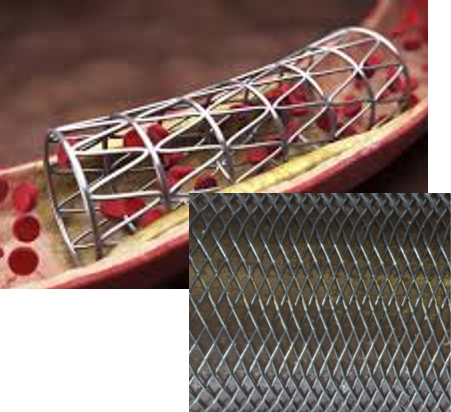Examination of the stent geometry for symmetries
- Type:Bachelor-/ Masterarbeit
- Date:ab 08 / 2024
- Tutor:
Examination of the stent geometry for symmetries
Environment
"Innovations for tomorrow's production, service and work" aims to improve production in medical technology. The final thesis is set in the context of a self-learning method that automatically detects errors in the braiding pattern of cardiovascular implants (stents) and suggests optimized adaptation parameters based on this.
In the practical realization, some assumptions are made to facilitate the computation. Here, the symmetry assumption stands out. That is, it is assumed that both the entire stent and the substructures (diamonds or "picks") are symmetrical, although this is not the case in practical application. The problem with this is that the error introduced by this simplification is unknown.
Task
- Investigation of the stent geometry for symmetries
- Are there any symmetries?
- If yes: What kind?
- If no: How can the error made by a symmetry assumption be described?
- Validation of the test results on real data
- Are the symmetries or non-symmetries visible there?
- How large is the real error with symmetry assumption?
Requirements
- Structured and analytical approach
- Practical programming experience (preferably in Python or C++)
- German and English fluent in written and spoken language
- Previous knowledge in the field of image processing is helpful


